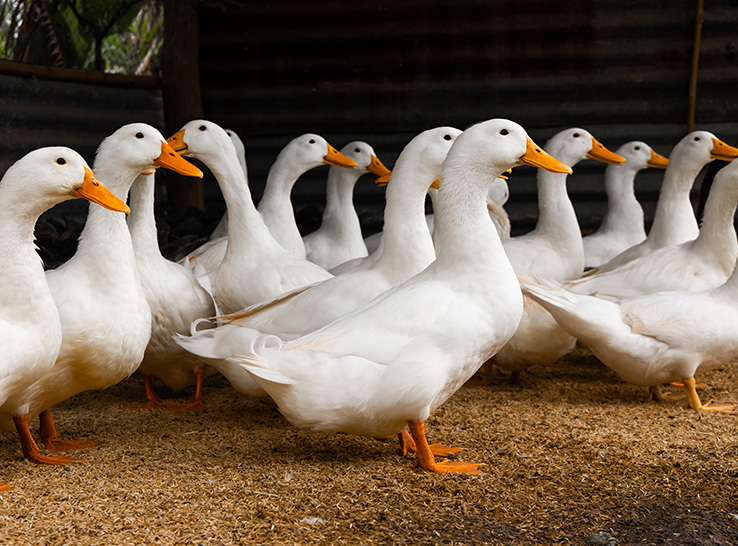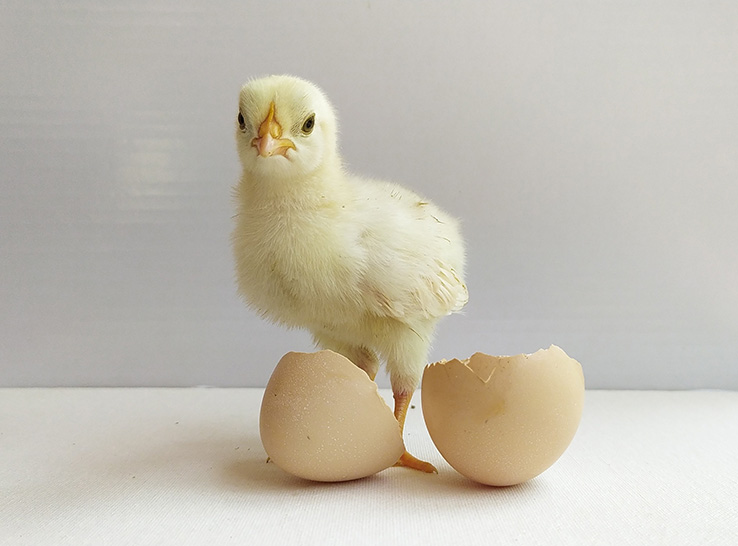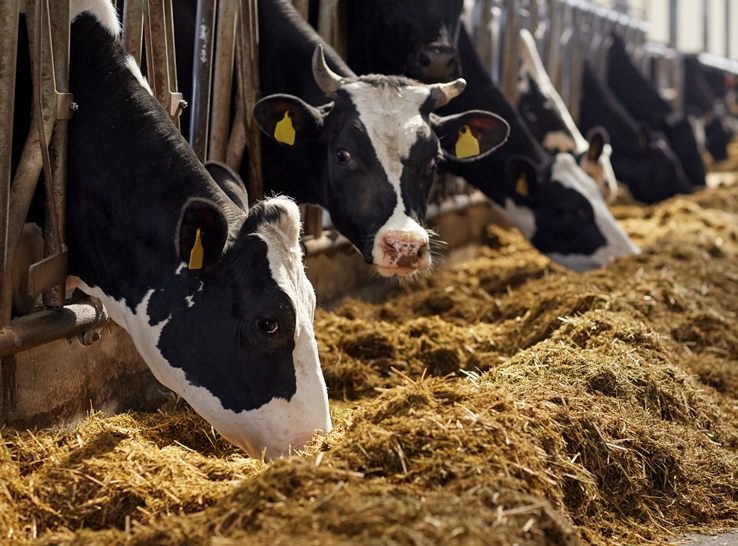On-farm hatching of broilers may be a viable option to increase efficiency by increasing hatchability and reducing total mortality during rearing, according to scientists in Denmark.
A research group from Aarhus University studied the concept of on-farm hatching of broilers as an alternative to hatching at a hatchery followed by transport to the farm. The team wanted to investigate if this concept would improve welfare by eliminating the need for transportation to the farm and by providing immediate access to food and water post-hatch.
This study focused on comparing the effects on welfare of hatching organic slow-growing broilers on-farm versus conventional hatchery-hatching of chicks by collecting data on parameters like mortality and gait score, among others.
Six trials
In total, six trials of two mixed-sex flocks of about 3,600 broilers were used in this study. Hubbard JA57 ColorYield organic broiler chickens were used. All chicks originated from the same parent flock and received the same treatment during incubation.
On day 18 of incubation, investigators transferred the soon to be on-farm-hatched eggs to the barn and placed them on One2Born holders. They then sorted the on-farm-hatched chicks before the hatchery-hatched chicks arrived at the barn; chicks categorized as second grade (regarded in this case as unhatched) were culled. The chicks that were kept were vaccinated conventionally.
The hatchery-hatched chicks went through typical processing, including sorting, vaccinating, transporting and offloading. Transport from the hatchery to the farm took about 1 hour. Investigators installed a temporary wall in the barns to keep on-farm- and hatchery-hatched chickens separate. The flocks were all raised on the same farm and processed at the same plant. The females were slaughtered on days 60-63 while the males were slaughtered on days 52-56.
Data collection
The research team collected data on the parameters listed below:
- hatchability
- chick quality
- mortality
- gait
- litter quality
- footpad dermatitis
- live weight before slaughter
- occurrences of breast blisters, skin injuries and condemnations
Before the male broilers were slaughtered, investigators collected data on mixed-sex flocks. After males were processed on day 56, they collected data from female broilers. Mortality was tallied daily until the day of slaughter. The gait score of 120 broilers from each group was determined the day before slaughter.
Litter quality was also determined the day before slaughter by observing the litter condition in one random area within six established subdivisions of each respective trial section. Investigators scored 2,400 paws for development of footpad dermatitis. They also assessed live weights, footpad score, breast blisters, skin injuries and condemnations at the processing plant.
Study results
When taking both unhatched and second-grade chicks into account, hatchability was higher for on-farm-hatched flocks, potentially because of more efficient sorting at the hatchery, the research team explains.
Abnormalities were more frequent with the hatchery-hatched broilers, possibly because of the lack of temperature and humidity control during transport to the farm and before hatching. The mortality for the entirety of the rearing period was higher in the hatchery-hatched broilers.
The researchers did not observe notable differences in gait scores, litter quality or footpad dermatitis scores between the flocks. Incidences of breast blisters were less frequent with male on-farm-hatched broilers than male hatchery-hatched broilers, while there were no significant differences between the females.
Finally, the researchers found that the difference in hatching environment had no effect on live weight, footpad dermatitis scores, skin injuries or number of condemnations at slaughter.
The research team believes more research should be done to investigate how on-farm-hatching systems affect other aspects of animal welfare.
The full paper can be found here.
Editor’s note: Content on Modern Poultry’s Industry Insights pages is provided and/or commissioned by our sponsors, who assume full responsibility for its accuracy and compliance.









